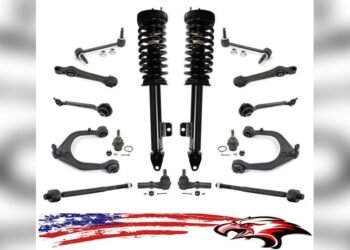Have you noticed unsightly burnt spots ruining your car’s paint? It’s frustrating to see your vehicle’s finish damaged by heat, sun, or chemicals, making your car look older and worn out.
But here’s the good news: you don’t have to live with burnt paint or rush to the body shop. You can fix it yourself, save money, and restore your car’s shine. In this guide, you’ll discover simple, step-by-step methods to repair burnt paint on your car, whether it’s mild discoloration or deeper damage.
Keep reading to learn how to bring your car’s paint back to life and protect it from future burns. Your car deserves to look its best, and you can make that happen.
Assess Paint Damage
Before fixing burnt paint on your car, start by assessing the damage carefully. This step helps you understand the extent of the problem. It guides you on the best repair method and tools needed. Take your time to inspect your car’s surface closely. Look for changes in color, texture, or shine. Note all the affected areas to plan your repair work effectively.
Identify Burnt Areas
Burnt paint often appears dull, cracked, or peeling. The clear coat may look cloudy or have bubbles. Check for spots where the paint feels rough or uneven. Use good lighting to spot subtle damage that is easy to miss. Mark these areas with tape or a washable marker. This makes it easier to focus on them during repair. Avoid confusing dirt or stains with burnt paint. Clean the surface first to see the real damage clearly.
Determine Damage Severity
Next, decide how deep the damage goes. Is it just the clear coat, or does it reach the base paint? Light damage can often be fixed with polishing or minor sanding. Severe burns might need repainting or professional help. Press gently with your finger to feel the surface texture. Smooth but dull spots mean mild damage. Rough, cracked, or missing paint means deeper harm. Knowing damage severity helps pick the right repair steps. It saves time and prevents further mistakes.

Credit: www.azdiyguy.com
Clean And Prepare Surface
Cleaning and preparing the surface is the first key step to fix burnt paint on your car. Dirt and contaminants block repair products from working well. A clean surface allows smooth polishing and better adhesion of paint products. Take your time to wash and clay bar the area. This helps reveal the true extent of the damage. Proper preparation prevents further damage and improves repair results.
Wash With Soap And Water
Start by rinsing the burnt area with clean water. Use a car wash soap mixed with water to clean the surface. Avoid household soaps as they can strip wax and damage paint. Use a soft sponge or microfiber cloth to gently wash the area. Remove all dirt, dust, and grease thoroughly. Rinse well with water and dry with a clean microfiber towel. A spotless surface is crucial for the next steps.
Use Clay Bar For Contaminants
After washing, some contaminants remain stuck on the paint. These include tree sap, tar, and industrial fallout. Use a clay bar kit to remove these invisible particles. Spray the clay lubricant generously on the surface. Rub the clay bar gently in straight lines across the area. The clay pulls out embedded contaminants without scratching the paint. Wipe off residue with a clean microfiber cloth. This step creates a smooth, clean surface ready for polishing or touch-up paint.
Repair Mild Damage
Repairing mild burnt paint damage on your car can bring back its original shine. This process involves careful steps to remove oxidation and restore the surface. It is a simple way to improve your car’s look without a full repaint.
Start by treating the affected area gently. Use the right products and tools to avoid further harm. Follow these key steps to fix mild damage effectively.
Apply Polishing Compound
Choose a polishing compound made for automotive paint. Apply a small amount to a clean microfiber cloth. Rub the compound on the burnt area using small, circular motions. This helps remove the damaged clear coat layer. Work slowly and check your progress often. The goal is to restore shine without removing too much paint.
Buff With Microfiber Cloth
After applying the polishing compound, take a fresh microfiber cloth. Buff the area gently to remove any residue. Use light pressure and keep moving the cloth in circles. Buffing smooths the surface and enhances the paint’s brightness. It also prepares the surface for the next step.
Protect With Wax Or Sealant
Once the surface looks smooth and shiny, apply wax or sealant. This layer protects the paint from future damage. Use a clean applicator pad to spread the product evenly. Allow it to dry as per the instructions. Then, buff again with a microfiber cloth for a glossy finish. This protection keeps your car’s paint looking fresh longer.
Fix Moderate To Severe Damage
Fixing moderate to severe burnt paint damage on your car requires a careful approach. This kind of damage goes beyond simple polishing and needs more detailed work. The process involves smoothing the surface and removing the damaged clear coat. Proper rinsing and drying follow to prepare the surface for repainting or sealing. This section explains each step clearly.
Wet Sand Burnt Paint
Start with wet sanding the burnt paint using fine grit sandpaper. This softens the damaged clear coat and smooths rough edges. Keep the sandpaper wet to avoid scratches and heat buildup. Sand gently in a circular motion until the burnt layer disappears. Check often to avoid sanding through the base paint. Wet sanding helps create a smooth surface for the next step.
Remove Damaged Clear Coat
After sanding, remove the damaged clear coat completely. Use a chemical clear coat remover or a sanding block with very fine grit. This step ensures no burnt paint remains. Work slowly and carefully, focusing only on the damaged area. Removing the clear coat prepares the surface for a fresh, even layer of paint and clear coat.
Rinse And Dry Surface
Rinse the sanded and stripped area with clean water to remove dust and residues. Use a clean microfiber cloth to dry the surface fully. Make sure no moisture stays on the car. A dry surface helps paint and clear coat stick better. This step is crucial before applying any new paint or protective layers.
Apply Primer And Paint
Applying primer and paint is a key step to fix burnt paint on a car. This process helps restore the surface and protect it from future damage. You must work carefully and follow each step to get a smooth and even finish. Proper primer and paint application can make your car look almost new again.
Use Primer On Sanded Areas
After sanding the burnt paint, the surface becomes rough and exposed. Use a high-quality primer to cover these sanded spots. Primer helps the paint stick better and prevents rust from forming. Spray or brush a thin, even layer of primer on the area. Let it dry completely before moving to the next step. Applying primer creates a smooth base for the paint.
Add Base Coat Color
Once the primer is dry, it’s time to add the base coat color. Match the paint color with your car’s original shade for the best results. Use light, even spray coats, holding the spray can or gun about 6-8 inches from the surface. Apply multiple thin layers instead of one thick coat. Allow each layer to dry before spraying the next. This builds up a rich, even color.
Spray Multiple Clear Coat Layers
Clear coat protects the paint and gives it a shiny finish. Spray several light layers of clear coat over the base color. Let each layer dry fully before applying the next. This adds depth and durability to the repair. Avoid spraying thick coats to prevent drips and runs. Proper clear coating seals the paint and restores the original gloss.

Credit: www.youtube.com
Touch Up Paint Chips
Small paint chips can make burnt paint damage look worse. Fixing these chips helps the car look smooth again. It also stops rust from starting on the metal beneath the paint.
Touching up paint chips takes patience and the right tools. Choose the right color paint that matches your car. Then, carefully apply it to the damaged spots.
Use Brush Or Pen For Touch-ups
Use a small brush or paint pen made for cars. They give control and help apply paint neatly. Dip the brush or pen lightly and paint the chip carefully. Avoid putting on too much paint at once.
Let the paint dry between coats. Apply more layers if the chip is deep. This method fills the chip and covers the exposed metal well.
Blend With Surrounding Paint
After the touch-up paint dries, blend it with the nearby paint. Use a fine polishing compound and a soft cloth. Rub gently around the touch-up area to smooth edges.
Blending makes the repair less visible. It helps the new paint match the car’s original shine and texture. Take your time for a natural look.
Final Protection Steps
After repairing burnt paint on your car, final protection steps keep your work lasting longer. These steps shield the paint from sun, dirt, and moisture. Applying protective layers enhances shine and guards against future damage. Follow these simple methods to protect your car’s finish effectively.
Apply Quality Wax
Wax adds a thin, protective layer over the paint. It helps repel water and dirt. Choose a wax made for automotive paint. Use a clean, soft cloth to apply wax in small circles. Let it dry to a haze, then buff it off with another clean cloth. Waxing regularly keeps the paint smooth and shiny.
Consider Ceramic Coating
Ceramic coating offers stronger protection than wax. It bonds to the paint, creating a hard, clear shield. This coating resists scratches, chemicals, and UV rays. Apply ceramic coating carefully following product instructions. It lasts longer and reduces the need for frequent waxing. Ceramic coating keeps your car looking new for years.

Credit: www.reddit.com
Frequently Asked Questions
How Do You Fix Sunburn Paint On A Car?
Wash and clay-bar the car to remove contaminants. Use polishing compound for mild damage. For severe damage, wet-sand, then apply primer, base coat, and clear coat. Finish with wax or sealant to protect the paint.
How To Get Rid Of A Burn Mark On Paint?
Clean the area thoroughly, then gently sand the burn mark. Apply primer, matching base coat, and clear coat. Finish with wax or sealant to protect the paint.
Can You Paint Over Burnt Paint?
You can paint over burnt paint only after sanding off the damaged clear coat. Then, apply primer, base coat, and clear coat for a smooth finish. Proper surface prep ensures paint adhesion and durability.
How To Fix Extremely Oxidized Paint On A Car?
Wash and clay bar the car to remove dirt and contaminants. Use a polishing compound to restore mild oxidation. For severe damage, wet-sand the area, apply primer, base coat, and clear coat. Finish with wax or sealant to protect the paint and enhance shine.
How Do You Fix Burnt Paint On A Car?
Start by washing the car, then use polishing or rubbing compounds to remove damage. Sand and repaint if needed.
Conclusion
Fixing burnt paint on your car takes patience and care. Start by cleaning the damaged area thoroughly. Use the right compounds to polish mild burns gently. For deeper burns, sanding and repainting may be necessary. Always let each layer dry completely before moving on.
Protect your repaired paint with wax or sealant afterward. Regular maintenance helps prevent future paint damage. Small repairs can save your car’s look and value. Follow these steps to restore your car’s shine with confidence.

















